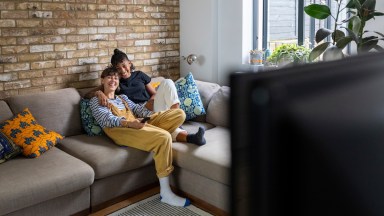https://nielsen.wistia.com/medias/8wzimtkwdz?embedType=async&videoFoam=true
2021 marks the 31st anniversary of the Americans with Disabilities Act. That’s a major milestone, and many advances have been made for those living with disabilities. Globally, there are 1 billion people living with a disability while in the U.S. the number of adults living with a physical or psychological disability stands at about 26% of the U.S. adult population. But as prominent as this community is in the population, it remains largely unseen, or inaccurately depicted, in movies and content on screen. And with increasing concerns about mental health challenges, especially during the pandemic, disability is increasingly a part of everyone’s experience and an important influence for a growing share of audiences that want to be represented on screen.
Media has a powerful role in educating audiences about disabilities, both visible and nonvisible. But the representation gap is glaring. Recent Nielsen survey findings reveal that when a story or character shows disabilities, audiences who live with disabilities say the portrayal of their identity group is inaccurate.
How The Visibility of Disability Has Evolved
The good news is that storytellers seem to be taking note by incorporating more of the diverse disability experience into content—and movies are leading the way. For example, our Gracenote Video Descriptors database reveals that the volume of content inclusive of disability has increased by over 175% in the last decade compared with the 10 years prior.
Among the 3,000 titles evaluated in this analysis, nearly 70% of the content inclusive of disability were feature films. But on average, Americans are still spending a significant amount of time with traditional television and streaming through connected devices. With television series accounting for about 16% of the content inclusive of disability, the sentiment among respondents saying TV is missing the mark on representation becomes clearer.
Television is where audiences spend the most time, but TV programs have lagged movies in representing people with disabilities.
The range of themes related to disabilities has also increased dramatically in recent years in content inclusive of disabilities.
There are more narratives that relate to the real-life experiences of someone who is disabled. With Family and Relationship being the top two themes, stories featuring disabilities are also showing how allies and loved ones relate and connect with those characters.
Raising the Visibility of Disability
Hollywood has made progress in depicting disabilities but much more needs to be done to provide more opportunities to disabled talent—one path to creating greater visibility and more accurate stories about disabilities. Earlier this year, more than 80 stars and entertainment industry professionals signed an open letter and launched the #DontDismissDis campaign, shedding light on the discrimination faced by disabled talent. RespectAbility, a leading nonprofit organization fighting stigmas by more diverse, authentic and accurate portrayals of people with disabilities, explains there are some recurring barriers to more authentic storytelling in Hollywood. “Even though the number of disabled characters on screen continues to increase in recent seasons, an estimated 95% of available roles are portrayed by talent without a disability,” said Lauren Appelbaum, Vice President, communications and entertainment & news media at RespectAbility and author of The Hollywood Disability Inclusion Toolkit. “When disability is a part of a character’s story, too often content can position disabled people as someone to pity or someone to cure. It is crucial we have disabled talent both in front of and behind the camera to develop genuine multi-dimensional characters.”
The media and entertainment industry has led the charge in advocating for diversity in all forms, and holds the power to raise awareness and drive disability inclusion. Greenlighting more projects, including more disabled talent on- and off-screen, encouraging self-ID so studios can find talent to ensure authentic depictions are a few steps studios and content creators can take. In a world where the struggle against inequities and stereotypes persist, media has a responsibility to make disability inclusion a reality.



